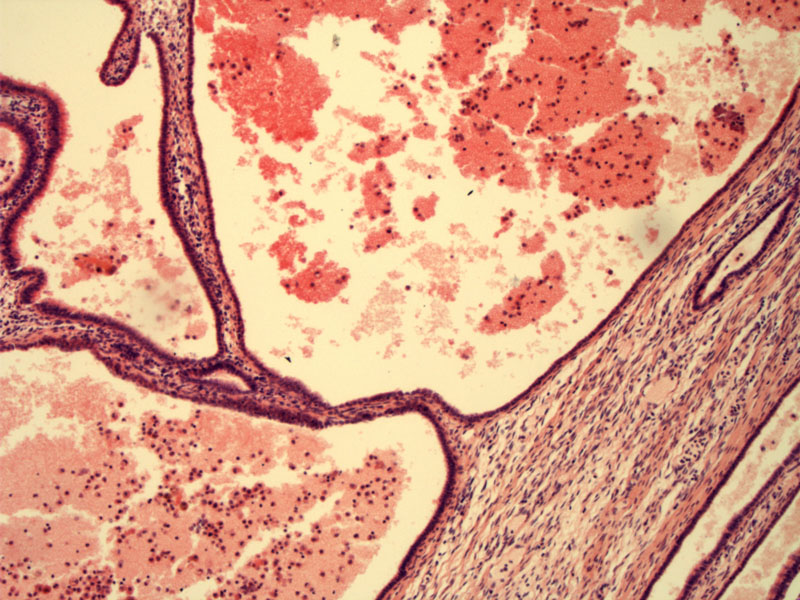

Cystically dilated spaces are lined by attenuated and non-ciliated epithelium.
There is little (if any) residual inflammation. The plicae may be fused during the reparative process.
Hydrosalpinx is a late sequelae of pelvic inflammatory disease (PID). PID is an ascending infection, classically due to gonorrhea and/or chlamydia, that involves the fallopian tubes. Initially, there is an acute suppurative salpingitis, and the tubal mucosa is heavily infiltrated by neutrophilis, plasma cells and lymphocytes. The tubal lumen may be filled with purulent material (pyosalpinx). The infection may involve the ovary and form abscesses in both locations (tubo-ovarian abscesses).
During resolution of the infection, the plicae of the fallopian may fuse together and form follicular-like spaces. The end result is termed hydrosalpinx follicularis. Alternatively, the fimbriae may fuse, leading to accumulation of tubal secretions and ballooning distention of the tubal lumen, resulting in hydrosalpinx. In either situation, the ovum will not be able to pass from ovary to the uterus, causing infertility.
Hydrosalpinx bears a risk of infertility as it signifies fallopian tube obstruction.
• Fallopian Tube : Tubo-ovarian Abscess
1 Kumar V, Abbas AK, Fausto N et al. Robbins and Cotran Pathologic Basis of Diseases. 8th Ed. Philadelphia, PA: Elsevier; 2010: 1010.
2 Robboy SJ, Anderson MC, Russell P. Pathology of the Female Reproductive Tract. London, UK: Churchill Livingstone; 2002: 418-21.
*** Images courtesy of Dr. Howard Wadstrom, University of New Mexico, Albuquerque NM.